Yesterday, the Federal Government released Budget 2021; as predicted, the Budget focused on the Government’s plan to finish the fight against COVID-19 and ensure a robust economic recovery. During remarks to the House of Commons, Deputy Prime Minister and Minister of Finance Chrystia Freeland characterized her first budget with three key priorities:
- Providing help for COVID-19 including purchasing vaccines, and supporting provincial healthcare;
- Getting Canada out of the COVID-19 recession through swift recovery of lost jobs, and supporting the hardest hit sectors; and
- Creating a resilient, more fair and more prosperous Canada — including improving social infrastructure like early learning, childcare, and income top ups.
The largest line item in the Budget was a commitment of $30B for a national childcare program over the next five years; $8.3B annually thereafter. A long-standing issue, the plan will create childcare spaces for Canadian families at an estimated $10 per child. Access to childcare remains an issue for skilled trades workers, who don’t fit the 9-5, Monday-Friday work schedule and we will continue to work with the government to ensure childcare means childcare for all workers.
There were some items notably missing from the Budget including new, significant investments in infrastructure, a national pharmacare program, federal health transfers to the provinces, a wealth tax and a universal living wage. Over the next several days, Members of Parliament will review, debate and discuss the Budget before the vote takes place. CBTU will closely follow these debates in the next few days to see if the Budget passes or fails. Should the Budget pass, the expected election will likely happen late summer/early fall rather than this spring.
Building Trades Budget Highlights
COVID-19 Support
Overall, over 500,000 workers have been laid off or faced working hours cuts due to the pandemic, including over 280,000 Canadians who have been unemployed for at least six months. The impacts of COVID-19 have also been disproportionate across the population, with adverse labour market outcomes for those that were vulnerable prior to the pandemic including young workers, women and racialized communities.
Supports for unemployed workers highlighted in Budget 2021 include:
- Up to 12 additional weeks of Canada Recovery Benefit to a maximum of 50 weeks. The first four of these additional 12 weeks will be paid at $500 per week. As the economy reopens over the coming months, the government intends that the remaining eight weeks of this extension will be paid at a lower amount of $300 per week claimed. All new Canada Recovery Benefit claimants after July 17, 2021 would also receive the $300 per week benefit, available up until September 25, 2021.
- Extending the Canada Recovery Caregiving Benefit an additional 4 weeks, to a maximum of 42 weeks, at $500 per week, in the event that caregiving options, particularly for those supporting children, are not sufficiently available in the interim as the economy begins to safely reopen.
Support for Skills Training
- $470 million over three years, beginning in 2021-22 to establish a new Apprenticeship Service through ESDC. The Service would help 55,000 first-year apprentices in construction and manufacturing Red Seal trades connect with opportunities at small and medium-sized employers. Employers would be eligible to receive up to $5,000 for all first-year apprenticeship opportunities to pay for upfront costs such as salaries and training. Additionally, the incentive would be doubled for employers who hire those underrepresented including women, racialized Canadians and persons with disabilities.
- $55 million over three years to ESDC for a Community Workforce Development Program. The program will support communities to develop local plans that identify high potential growth organizations and connect these employers with training providers to develop and deliver training and work placements to upskill and reskill jobseekers to fill jobs in demand. Funding would be delivered through calls for proposals under two streams: A national stream focused on priority areas, like de-carbonization and supporting a just transition for workers in transforming sectors like energy, which would dedicate 75 per cent of funding to projects that support underrepresented groups; and a regional stream delivered by Service Canada regional offices, in partnership with regional development agencies, and focused on regional priorities.
- $960 million over three years to ESDC for a new Sectorial Workforce Solutions Program to help design and deliver training that is relevant to the needs of businesses, especially small and medium-sized businesses, and to their employees. This funding would also help businesses recruit and retain a diverse and inclusive workforce. This investment will help connect up to 90,000 Canadians with the training they need to access good jobs in sectors where employers are looking for skilled workers. This includes sectors like health, clean energy and construction, including ensuring 40 per cent of supported workers are from underrepresented groups, including women, persons with disabilities, and Indigenous people.
- $250 million over three years, to Innovation, Science and Economic Development Canada for an initiative to scale-up proven industry-led, third-party delivered approaches to upskill and redeploy workers to meet the needs of growing industries.
- $298 million over three years, beginning in 2021-22, through Employment and Social Development Canada, in a new Skills for Success program that would help Canadians at all skills levels improve their foundational and transferable skills
- $109.3 million in 2022-23 for the Youth Employment and Skills Strategy to better meet the needs of vulnerable youth facing multiple barriers to employment, while also supporting over 7,000 additional job placements for youth.
Making Employment Insurance More Accessible
Budget 2021 proposes $3.9 billion over three years, starting in 2021-22, for a suite of legislative changes to make EI more accessible and simple for Canadians over the coming year while the job market begins to improve. Some notable changes include:
- Maintain uniform access to EI benefits across all regions, including through a 420-hour entrance requirement for regular and special benefits, with a 14-week minimum entitlement for regular benefits, and a new common earnings threshold for fishing benefits.
- Allow claimants to start receiving EI benefits sooner by simplifying rules around the treatment of severance, vacation pay, and other monies paid on separation.
- $5 million over two years, starting in 2021-22, to ESDC to conduct targeted consultations with Canadians, employers, and other stakeholders from across the country. Any permanent changes to further improve access to EI will be made following these consultations and once the recovery is fully underway.
Jobs and Growth Through Infrastructure Investments
- $200 million over three years to Infrastructure Canada to establish a Natural Infrastructure Fund to support natural and hybrid infrastructure projects to help improve well-being, mitigate the impacts of climate change and prevent costly natural events.
- $2.5 billion, and reallocate $1.3 billion in existing funding to speed up the construction, repair, or support of 35,000 affordable housing units. Including 300 million in funding in 2021-22 and 2022-23 from the Rental Construction Financing Initiative, which will be allocated to support the conversion of vacant commercial property into housing.
- Over $15 billion in joint funding with provinces and territories directed towards community housing, households in need through the Canada Housing Benefit, and support for provincial and territorial housing priorities related to repair, construction, and affordability
- $4.4 billion on a cash basis ($778.7 million on an accrual basis over five years, starting in 2021-22, with $414.1 million in future years) to the Canada Mortgage and Housing Corporation (CMHC) to help homeowners complete deep home retrofits through interest-free loans worth up to $40,000
Green Recovery Investments
- Budget 2021 proposes to introduce an investment tax credit for capital invested in Carbon Capture, Utilization, and Storage projects with the goal of reducing emissions by at least 15 megatonnes of CO2 annually. This measure will come into effect in 2022.
- $319 million over seven years, starting in 2021-22, with $1.5 million in remaining amortization, to Natural Resources Canada to support research, development, and demonstrations that would improve the commercial viability of carbon capture, utilization, and storage technologies.
- $35 million to help establish the Centre for Innovation and Clean Energy to advance the scale-up and commercialization of clean technologies in B.C. and across Canada, in partnership with the Government of BC.
- $40.4 million over three years, starting in 2021-22, to support feasibility and planning of hydroelectricity and grid interconnection projects in the North. This funding could advance projects, such as the Atlin Hydro Expansion Project in Yukon and the Kivalliq HydroFibre Link Project in Nunavut. Projects will provide clean power to northern communities and help reduce emissions from mining projects.
- $36 million over three years, starting in 2021-22, through the Strategic Partnerships Initiative, to build capacity for local, economically-sustainable clean energy projects in First Nations, Inuit, and Métis communities and support economic development opportunities.
Federal $15 Minimum Wage
The Government of Canada is announcing its intention to introduce legislation that will establish a federal minimum wage of $15 per hour, rising with inflation, with provisions to ensure that where provincial or territorial minimum wages are higher, that wage will prevail.
Conclusion
There were several line items re-announcing existing infrastructure funding. We would have liked to see the inclusion of skilled labour mobility, community benefits agreements tied to national infrastructure spending and new infrastructure stimulus. However, there is a lot in the budget that will help to continue building Canada’s skilled trades workforce. We need to ensure that funds that have been committed – in Budget 2021 and previously – flows out the door, putting shovels in the ground and people to work, faster. Of utmost importance though, is keeping our workers and job sites safe. This means getting the vaccine – whatever the brand – whenever it is available to you. It means ensuring every job site and every worker has the personal protective equipment they need, that it is used properly, and enforced consistently. We need to ensure that an economic recovery means low to non-existent spread of the COVID-19 virus or more harmful variants.
A safe workplace will mean construction continues to be kept open, building Canada, safely.

